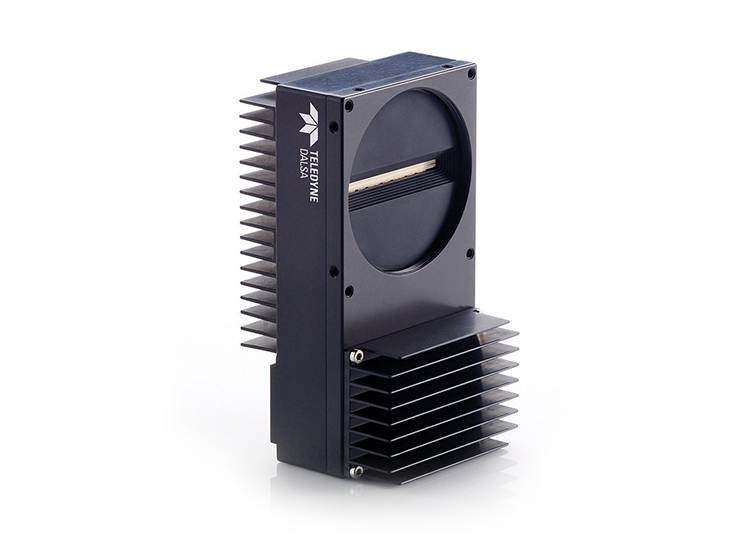Foam Inspection System
The use of camera systems for streamlining automated inspection applies to every aspect of fabrication
Car seat interiors don’t rate highly on the list of things people scrutinize when buying a car. However, considering the amount of time we spend sitting in them, their integrity is quite important, both from a safety and comfort standpoint, and for this reason they undergo a rigorous assessment during production to ensure that any defects or deficiencies are caught. Until now, these assessments have been done manually – which is both a time consuming and inexact science. G2 Technologies, a North Carolina based systems integrator, has introduced a new inspection system which integrates Teledyne DALSA Piranha3 16K line scan cameras to expedite and vastly improve this system.

“The increase in the number of defects the manufacturer is able to detect thanks to this automated inspection system is significant,” said Craig Borsack, PE, president of G2 Technologies. “The benefits include improved satisfaction levels from their own end customers and increases in productivity thanks to the automated system, which requires fewer inspections. Additionally, companies will be able to optimize their manufacturing process using insight from newly available data and analytics.”
How it’s made
Car interior padding is made from polyurethane, which is produced in rolls that are up to 80 inches wide, and vary in lengths of up to several thousand yards depending on the specific requirements of each customer. These rolls are then sent to automotive interior manufacturers who use heat to transform the foam into an adhesive that secures fabric to the components that make up an automobile’s interior. Any defect in the foam— a tear, hole, grease stain, gradients, striations, or thickness variations in the foam itself—can impact the visual appearance or integrity of the final product, resulting in a cosmetic defect or preventing the fabric from adhering correctly.
This is why the final inspection of the foam before shipment to the customer is very important, and has historically been carried out manually by an inspector who assesses the foam as it’s being rolled out. However, because the foam being rolled out moves at approximately 600 feet per minute, inspectors are only able to identify gross defects – i.e. large tears or holes and significant stains. This leaves quite a bit of room for error, and for manufacturers committed to delivering quality products it has always been a big concern. If a customer receives defective foam, it is often returned and scrapped at the expense and reputation of the manufacturer.

A new solution
In response to the demand for a better, more cost-effective process, G2 Technologies developed a streamlined automated inspection solution. “More than a decade ago, we developed our first web inspection solution, and now we’re deploying our fourth-generation architecture,” explained Borsack. “With material that moves continuously at high-speed, manufacturers needed a web inspection system that can leverage cameras that offer the highest sensor resolution and the fastest scan rate possible, so we integrated Teledyne DALSA’s Pirahna3-16K cameras into the application. No other camera available today is as fast.”
Two Piranha3-16K cameras are positioned at fixed points above the web and can capture surface defects as small as 0.020 of an inch, including holes or tears in the foam, as well as grease and dirt stains. In addition to surface defects, the automated web inspection can also detect gradients in the foam and continuously monitors width and thickness in real-time. Any foam that is manufactured incorrectly will have a different appearance, which is often not recognizable to the human eye, but the Teledyne DALSA cameras are sensitive enough to pickup on them.
The Details are in the Data
As defects are identified, data about each defect—including an image and its location on the roll—are stored using G2 Technologies’ dTRAK data analytics platform. The manufacturer is able to use this information to understand the number, type, and location of defects present on each roll of foam and to evaluate the overall quality of production. In most cases, when only a few minor defects are found, the manufacturer may opt to ship the foam as is. In some cases, the manufacturer will even ship the foam and the dTRAK report to the end customer, who can use the report to determine which sections of foam to use. In a few cases where inspection reveals major defects or significant problems with the foam’s chemical composition, the manufacturer can opt to scrap the batch completely—before it reaches the customer.
This inspection system has vastly improved the quality of foam being produced for automotive interior manufacturers and saved the companies who supply the foam a significant amount of money and time.
About G2 Technologies: G2 Technologies, Inc. is a leader in the test and measurement industry specializing in the design and development of automated inspection, measurement and test systems. G2 Technologies’ automated solutions correct manufacturing problems at the source, resulting in improved product quality and lower manufacturing costs. Its mission is to create robust industrial solutions that empower our customers to solve challenges critical to their business consistently and cost effectively.
For more information, visit www.g2tek.com



